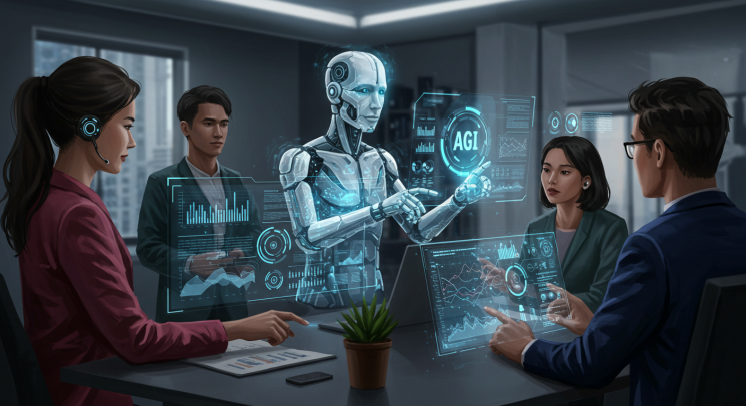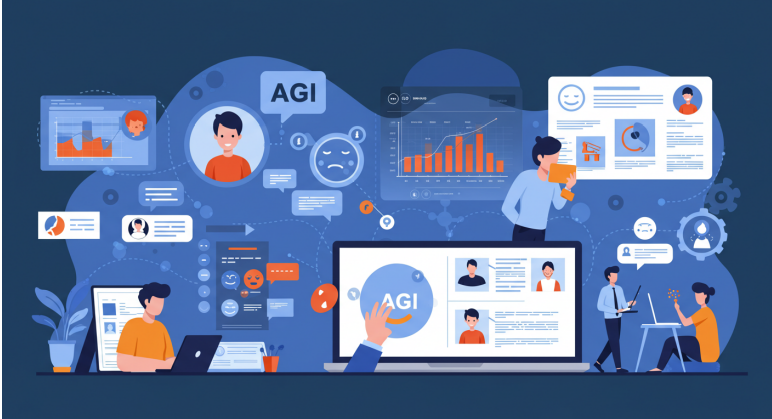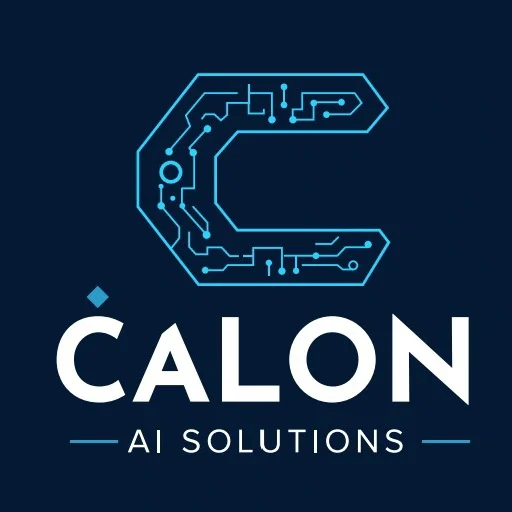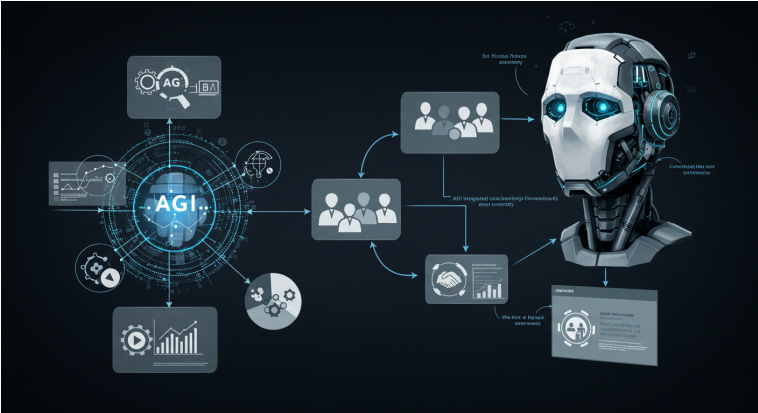Artificial General Intelligence (AGI) Explained: How It differs from AI and Why It Matters for Business
Introduction: The Dawn of AGI—A New Era for Technology and Business
Imagine a machine that learns, adapts, and reasons like a human capable of writing a symphony, diagnosing a rare disease, or optimizing a global supply chain, all without explicit programming. This is the promise of Artificial General Intelligence (AGI), a leap beyond today’s specialized AI systems. While Narrow AI powers everything from chatbots to fraud detection, AGI represents a paradigm shift with profound implications for industries, workforce dynamics, and business strategy. For companies like Calon AI Solutions, understanding AGI isn’t just about staying ahead—it’s about redefining what’s possible. This blog demystifies AGI, explores how it differs from Narrow AI, and examines its potential to transform business efficiency, decision-making, and customer engagement.
1. Artificial General Intelligence (AGI) vs. Narrow AI
Narrow AI—the technology behind Alexa, Netflix recommendations, and self-driving cars—excels at specific tasks but lacks versatility. AGI, on the other hand, aims to replicate human-like cognitive abilities, enabling machines to learn, reason, and adapt across diverse domains.
Key Differences Between Narrow AI and AGI
Scope: Narrow AI is task-specific, such as image recognition, while AGI is general-purpose and capable of problem-solving.
Learning: Narrow AI requires labeled data and predefined rules, while AGI learns autonomously like humans.
Adaptability: Narrow AI struggles outside trained scenarios, whereas AGI transfers knowledge across domains.
Autonomy: Narrow AI follows programmed instructions, but AGI makes independent decisions.
Example: A Narrow AI system like GPT-4 can draft emails but can’t diagnose a patient. AGI could theoretically do both by understanding context and causality.

2. AGI vs. Human Intelligence
AGI seeks to emulate human cognitive abilities, but how close are we?
Learning: Humans learn from minimal data, and AGI aims to match this efficiency.
Creativity: While Narrow AI generates art or music via patterns, AGI could innovate meaningfully, such as composing a novel genre.
Ethics and Emotion: AGI raises questions about empathy and moral reasoning—traits intrinsic to humans.
A 2023 MIT survey found that 72 percent of AI researchers believe AGI could emerge by 2060.

3. AGI in Business Strategy
For businesses, AGI isn’t just a tool—it’s a strategic partner.
Hyper-Personalized Decision-Making: AGI analyzes market trends, competitor moves, and internal data to recommend strategies in real time.
Business AI Integration at Scale: AGI unifies siloed departments, from marketing to research and development, enabling seamless collaboration.
AI Adoption for SMEs: AGI democratizes advanced analytics, allowing small businesses to compete with enterprises via affordable, intuitive platforms.
Businesses should prepare by investing in AI consulting services to build adaptable infrastructure.
4. AGI-Powered Automation
While Narrow AI automates routine workflows such as invoice processing, AGI will revolutionize intelligent automation.
Predictive Analytics: AGI could forecast supply chain disruptions months in advance, accounting for geopolitical, environmental, and market variables.
Self-Optimizing Systems: Factories powered by AGI would adjust production lines autonomously based on real-time demand and resource availability.
Businesses using AI-driven business efficiency tools report 35 percent faster time-to-market, according to McKinsey.
5. Workforce Transformation
The future of work with AGI isn’t about job loss—it’s about evolution.
New Roles: AGI trainers, ethics auditors, and human-AI interaction designers.
Upskilling: AGI handles data crunching, freeing humans for creative and strategic tasks.
Industry Disruption:
Healthcare: AGI assists in drug discovery and personalized treatment plans.
Finance: Real-time risk assessment and fraud detection with human-like reasoning.
JPMorgan’s AI-driven COiN platform saved 360,000 hours annually—AGI could multiply this impact.
6. AGI in Decision-Making
AI-powered decision-making today relies on predefined algorithms. AGI adds contextual awareness.
Strategic Choices: AGI evaluates long-term consequences, such as entering a new market or acquiring a startup.
Crisis Management: AGI simulates scenarios such as cyberattacks or public relations crises to recommend optimal responses.
Example: During the 2021 Suez Canal blockage, AGI could have rerouted global shipments dynamically, minimizing losses.
7. AGI-Powered Customer Engagement
Narrow AI personalizes marketing emails. AGI could redesign entire customer journeys.
Predictive Personalization: AGI anticipates needs based on life events, such as suggesting a mortgage before a user searches.
Emotional Intelligence: AGI detects subtle cues in voice or text to tailor interactions, reducing churn.
Omnichannel Unity: AGI maintains consistent, context-aware conversations across email, social, and in-store touchpoints.
A Salesforce study found that 64 percent of consumers expect real-time AI support—AGI could exceed these expectations.
8. Preparing for AGI
AGI’s arrival will be gradual but transformative. Businesses should prepare by taking the following steps:
Build Agile Infrastructure: Partner with AI consulting services like Calon AI Solutions to future-proof systems.
Ethical Governance: Establish frameworks for AGI accountability and transparency.
Pilot Hybrid Models: Combine Narrow AI tools with emerging AGI prototypes for incremental learning.
Conclusion
AGI isn’t just a smarter AI—it’s a fundamental shift in how machines and humans collaborate. From workforce transformation to AI-powered customer engagement, businesses that embrace AGI early will lead the next era of innovation.
Calon AI Solutions specializes in AI strategy consulting and business AI integration, helping organizations navigate the AGI transition with confidence.




